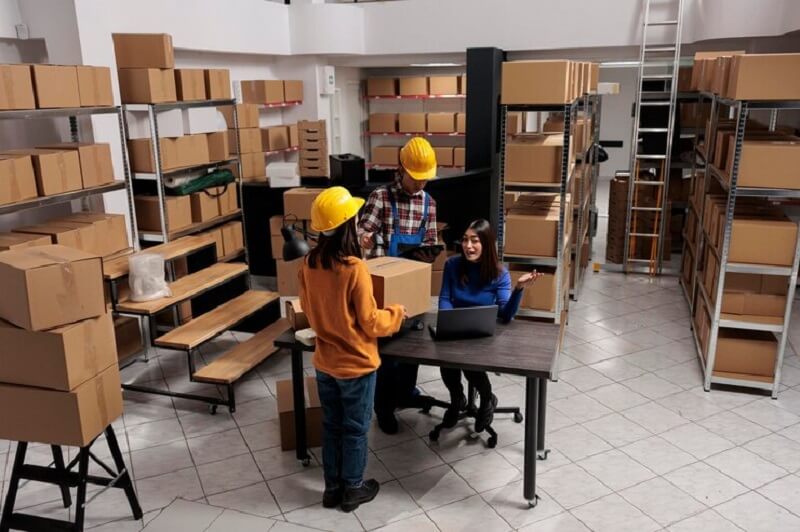Understanding the difference between goods and services is like knowing how apples are different from oranges when you go to buy them. Goods are like apples – things you can touch, like toys or clothes. Services, on the other hand, are more like the care you get at the doctor’s office or the fun you have at a theme park – you can’t really hold them in your hand.
Goods have a special feature – when you buy them, you become the boss, and they become yours. But with services, it’s not like that. You don’t really own a service; you just get to enjoy it when you need it.
Imagine you buy a toy (that’s good) – you can keep it in your room and play with it whenever you want. Now, think about getting your hair cut (that’s a service) – you can’t keep a haircut; it’s something you enjoy right when it happens.
These differences are pretty important because they affect how things are made, stored, and how we use them. So, let’s take a closer look at what makes goods and services different and why it matters when we buy and sell things.
when we buy and sell things.
What are Goods?
Goods, at their core, are tangible and physical products that fulfill consumer needs and desires. These items, ranging from durable to non-durable, can be seen, touched, and stored. The transfer of ownership is a defining feature of goods, occurring when the consumer makes a purchase. Production involves a specific time period, and goods can be manufactured in batches to meet market demand. The tangible nature of goods gives them unique structures, sizes, and shapes.
Example of Goods
| Food, | clothing, |
| cars, | electronics, |
| furniture | Computers, |
| phones, | and apples |
| Books, | pens, |
| bottles, | bags |
What are Services?
In stark contrast, services encompass intangible and non-physical activities. These elements of the economy cannot be touched and are perishable, provided at the precise moment of consumer demand. Services lack a physical identity and cannot be owned; they exist for utilization when required. Unlike goods, services undergo no transfer of ownership. They cannot be stored for future use, and distinguishing the service from the service provider poses a challenge.
Example of Services
| Doctor’s visits | Haircuts | Pedicures |
| Training | Consulting | Insurance |
| Banking | Transportation service | Marketing services, |
| Travel services, | Catering services, | Therapy sessions, |
| Babysitting, | Surgery, | House cleaning, |
| Legal advice | Coffee shops, | Dentists, |
| Tax advisers, | Law firms, | Accounting firms, |
| Digital marketing agencies, | Healthcare providers, | Financial institutions, |
| Consulting firms | Watching a movie at a multiplex, | availing concierge services at a restaurant. |
What is the Difference between Goods and Services?
The differences between goods and services are significant and play a crucial role in economic transactions. Here are key distinctions:
Nature
- Goods: Tangible items with a physical presence, such as books, pens, and clothing, can be touched, seen, and stored.
- Services: In contrast, services are intangible activities, like getting a haircut or watching a movie, providing experiences rather than physical items.
Transfer of Ownership
- Goods: Ownership is seamlessly transferred from the seller to the buyer upon purchase.
- Services: However, services do not involve the transfer of ownership; the consumer utilizes the service without owning it.
Evaluation
- Goods: Evaluating goods is relatively straightforward, relying on tangible attributes like quality and quantity.
- Services: In contrast, evaluating services is more challenging as it depends on intangible attributes such as customer experience and the expertise of the service provider.
Return
- Goods: If not satisfied, goods can be returned to the seller for a refund or exchange.
- Services: Conversely, once a service has been provided, it cannot be returned, as services are consumed at the time of delivery.
Separability
- Goods: Goods can be separated from the seller after purchase, establishing a distinct ownership.
- Services: On the other hand, services are inseparable from the service provider, with the person delivering the service being an integral part of the experience.

Variability
- Goods: Products are identical and consistent in their characteristics, maintaining the same specifications across the market.
- Services: In contrast, services exhibit diversity due to variations in delivery, with the experience varying based on the provider and other factors.
Storage
- Goods: Tangible items can be stored for future use, providing flexibility in consumption.
- Services: However, services cannot be stored, and consumed at the time of production and remain time-bound and immediate.
Production and Consumption
- Goods: There is a time lag between the production and consumption of goods, involving distinct stages of production, trade, and consumption.
- Services: In contrast, services are unique as they are produced and consumed simultaneously, with the delivery happening in real time.
These differences significantly influence how goods and services are produced, traded, and consumed in economic exchanges. They impact various factors, including customization possibilities, distribution methods, and value determination.
Final Thoughts – How Do Goods Differ from Services?
It’s important to know the differences between goods and services for smart decision-making in buying and selling. Goods are things you can touch, like clothes or electronics, and you can keep them for later. Services are experiences, like consulting or banking, which you can’t hold; you enjoy them when you need them. These differences affect how things are made, judged, and if you can return them. Understanding these details helps us navigate the world of buying and selling. So, how do goods differ from services? It’s all about what you can touch and keep versus experiences you enjoy when you need them.